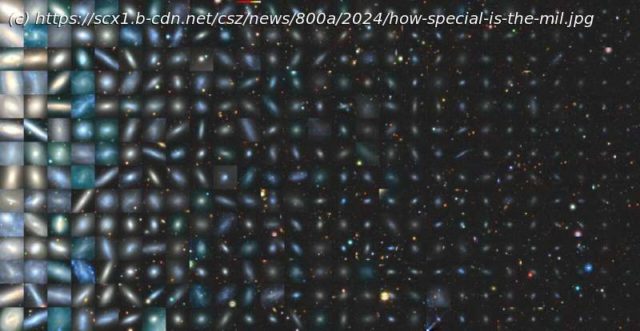Is our home galaxy, the Milky Way galaxy, a special place? A team of scientists started a journey to answer this question more than a decade ago. Commenced in 2013, the Satellites Around Galactic Analogs (SAGA) Survey studies galaxy systems like the Milky Way. Now, the SAGA Survey has published three new research articles on the arXiv preprint server that provide us with new insights into the uniqueness of our own Milky Way galaxy after completing the census of 101 satellite systems similar to the Milky Way’s.
Is our home galaxy, the Milky Way galaxy, a special place? A team of scientists started a journey to answer this question more than a decade ago. Commenced in 2013, the Satellites Around Galactic Analogs (SAGA) Survey studies galaxy systems like the Milky Way. Now, the SAGA Survey has published three new research articles on the arXiv preprint server that provide us with new insights into the uniqueness of our own Milky Way galaxy after completing the census of 101 satellite systems similar to the Milky Way’s.
These « satellites » are smaller galaxies in both mass and size that orbit a larger galaxy, usually called the host galaxy. Just as with smaller satellites that orbit the Earth, these satellite galaxies are captured by the gravitational pull of the massive host galaxy and its surrounding dark matter.
The Milky Way is the host galaxy of several satellite galaxies, of which the two largest are the Large and Small Magellanic Clouds (LMC and SMC). While LMC and SMC are visible to the naked eye from the Southern Hemisphere, there are many other fainter satellite galaxies orbiting around the Milky Way that can only be observed with a large telescope.
The goal of the SAGA Survey is to characterize satellite systems around other host galaxies that have similar stellar masses as the Milky Way. Yao-Yuan Mao, a University of Utah faculty member in the Department of Physics and Astronomy, is co-leading the SAGA Survey with Marla Geha at Yale University and Risa Wechsler at Stanford University.






